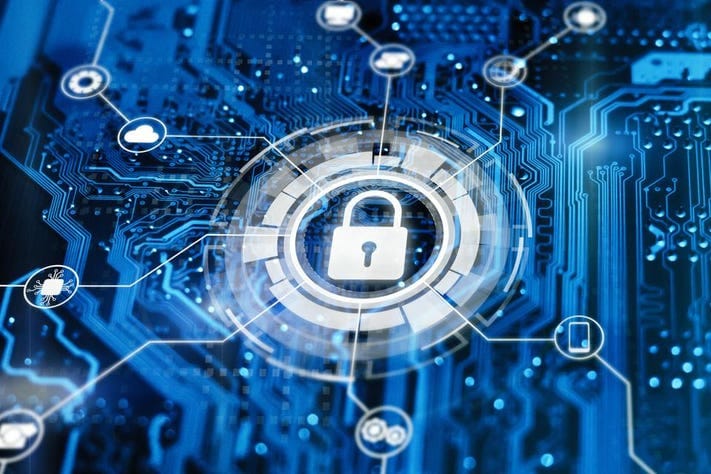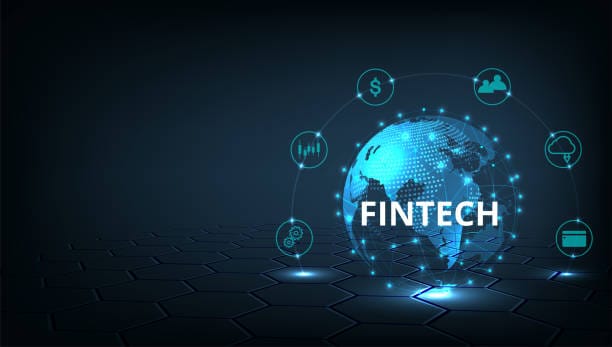We live in an era where the invisible currents of data flow through every corner of our lives. Our emails, bank accounts, medical records, photos, shopping habits, and even our late-night thoughts whispered to search engines — all of it moves across networks we cannot see. This digital bloodstream fuels the convenience and connectivity of the modern world, yet it also creates a dilemma that is as human as it is technical: How do we protect our data while still allowing it to be used?
This question leads us directly into two fields often mentioned in the same breath but fundamentally different in focus: cybersecurity and data privacy. To the untrained ear, they might sound interchangeable, twin guardians of our digital lives. But look closely, and you’ll find they are distinct — partners in purpose, yet unique in their scope, their methods, and their philosophies.
Understanding the difference isn’t just an exercise in terminology. It’s the difference between knowing how to lock your house and deciding who gets to enter. It’s the difference between building a fortress and defining the moral code for what happens inside.
A Tale of Two Disciplines
Cybersecurity, at its core, is the art and science of defending systems, networks, and data from attack, damage, or unauthorized access. It is the digital equivalent of an army, a surveillance system, and a fire department all rolled into one. Cybersecurity practitioners think about threats: hackers, malware, ransomware, phishing, insider sabotage, and the endless creativity of those who seek to exploit vulnerabilities.
Data privacy, on the other hand, is not about fighting intruders — it’s about defining boundaries. Privacy asks: Who is allowed to see your data? Under what conditions? For what purpose? And crucially, how much control should you, the individual, have over this process? If cybersecurity is about building walls and gates, privacy is about deciding who gets the keys, when, and why.
It’s possible to have strong cybersecurity and poor privacy, just as it’s possible to have strong privacy policies undermined by weak cybersecurity. Both must work in harmony for true digital safety to exist.
The Human Element Behind the Terms
One of the most common misconceptions is that cybersecurity is purely technical — a realm of firewalls, encryption, intrusion detection systems, and code. While these are its tools, the discipline is deeply human. The best security protocols fail when humans ignore them, misunderstand them, or circumvent them for convenience. The weakest link in any cybersecurity chain is often not a line of code but a person: the employee who clicks on a suspicious link, the user who reuses passwords, the executive who underestimates a threat.
Privacy, too, is human at its core. Privacy is about dignity, autonomy, and trust. It is the recognition that behind every “data point” is a living person with feelings, rights, and vulnerabilities. A credit card number might seem like just a string of digits, but in the wrong hands, it can lead to financial ruin. A medical record might appear as text in a database, but mishandling it can cause personal humiliation or discrimination.
This human dimension is why the two fields are so often conflated — because at their heart, they both serve people.
Historical Roots: From Locked File Cabinets to Digital Fortresses
To truly understand the difference, it helps to trace their origins. Cybersecurity, in a formal sense, emerged alongside the rise of computers and networked systems in the mid-to-late 20th century. In the early days of computing, security concerns were minimal — computers were isolated, massive machines locked in labs. But as networks grew, the possibility of remote intrusion became real. By the time the internet exploded into public life in the 1990s, cybercrime was already evolving.
Data privacy has deeper, older roots. Long before computers, societies recognized the importance of protecting personal information — whether that meant safeguarding medical records, sealing letters, or enforcing confidentiality agreements. The idea that certain information belongs solely to the individual predates electricity, but the digital age multiplied the complexity. Suddenly, a single click could transmit personal data across continents.
Cybersecurity was born out of the need to defend systems. Privacy law and philosophy were born out of the need to respect individuals. Their intersection was inevitable.
The Battlefields of Cybersecurity
Imagine cybersecurity as an unending chess game played against thousands of opponents simultaneously. Some are lone amateurs testing their skills. Others are highly organized, state-sponsored teams with political objectives. Some act out of greed, others out of ideology, and still others simply for the thrill of disruption.
Cybersecurity’s job is to anticipate moves before they’re made. It involves constant vigilance: monitoring network traffic for anomalies, patching software vulnerabilities before they are exploited, encrypting communications so they are meaningless if intercepted. It is a field where a single oversight can have catastrophic consequences, and where yesterday’s defense might already be obsolete tomorrow.
And yet, cybersecurity is not only about reacting to threats — it’s about resilience. A truly secure system is not just hard to break into; it is designed to withstand damage, recover quickly, and adapt. This resilience mirrors human psychology in times of crisis: the ability to absorb a blow and continue functioning.
The Ethical Landscape of Privacy
Privacy operates on a different battlefield — one of ethics, policy, and choice. The question here is not “Can someone get into the system?” but “Should they be allowed to, even if they can?”
In a hospital, for example, cybersecurity protects patient records from hackers. Privacy rules determine which doctors and staff are permitted to view those records, under what circumstances, and with whose consent. In the world of social media, cybersecurity protects accounts from being hijacked. Privacy policies dictate how the platform itself collects and uses the information you willingly share.
This is why privacy is often contentious. Different cultures and countries hold vastly different views on what constitutes a fair balance between individual privacy and societal needs. In the European Union, the General Data Protection Regulation (GDPR) enshrines privacy as a fundamental right. In other parts of the world, commercial or governmental interests often override personal control over data.
When Cybersecurity Succeeds and Privacy Fails
Consider a scenario: A tech company invests millions in state-of-the-art cybersecurity infrastructure. Firewalls are impenetrable, encryption is military-grade, and penetration tests reveal no exploitable weaknesses. Yet the company’s privacy policy allows it to collect vast amounts of user data — browsing habits, location history, even microphone recordings — and sell it to advertisers.
From a cybersecurity perspective, this system is exemplary. From a privacy perspective, it is a disaster. No hackers needed; the data flows out the front door, perfectly legally, because the terms and conditions — often buried in fine print — grant the company permission.
This is where the confusion arises. A user might think, “My data is safe; the company has strong security.” But security does not equal privacy. A vault can be impregnable yet still opened daily by the person with the key, who sells what’s inside.
When Privacy is Strong but Security Falters
The reverse is also possible. Imagine a small medical clinic with strict privacy rules: patient data is never shared without consent, only the attending physician can access files, and every action is logged. These are robust privacy safeguards. But if the clinic stores its records on an unencrypted laptop and connects it to a network without protection, a single phishing email could give attackers full access.
The ethical standards are irrelevant if the technical defenses crumble. This is why privacy without security is like an honor code without locks — noble in intention, but vulnerable in practice.
How the Two Intersect in Real Life
In practice, cybersecurity and privacy constantly overlap. Every time you connect to your bank’s website, encryption ensures that the data cannot be intercepted (security), while authentication mechanisms verify you are who you claim to be and that you have the right to see your account information (privacy).
In workplaces, cybersecurity ensures that only authorized devices can connect to internal networks, while privacy policies dictate what monitoring the employer can legally perform on those devices.
The best organizations understand that trust comes from both pillars working together. Customers trust a company not just because it can repel hackers, but because it respects their choices about how data is handled.
The Psychological Impact on Users
There is a human cost when either pillar fails. A cybersecurity breach can cause immediate panic, financial loss, and a deep sense of violation — like coming home to find a stranger has rifled through your belongings. A privacy violation can be more insidious, eroding trust slowly, leaving people feeling manipulated or surveilled even if no direct harm is visible at first.
The irony is that many users willingly trade privacy for convenience without realizing it. We grant mobile apps permission to track our locations so they can provide directions, or allow websites to remember our preferences without questioning what else is being remembered. The “I have nothing to hide” argument ignores the fact that privacy is not about hiding wrongdoing — it is about maintaining control over one’s personal life.
Cybersecurity failures make headlines with dramatic flair; privacy failures often slip under the radar, their consequences felt quietly over time.
Laws, Regulations, and Global Perspectives
Around the world, governments grapple with the tension between these two domains. Laws like GDPR in Europe or the California Consumer Privacy Act (CCPA) in the U.S. give individuals more control over personal information, reflecting the privacy perspective. Cybersecurity laws, on the other hand, focus on mandatory breach notifications, critical infrastructure protection, and standards for secure system design.
In some regions, privacy is considered a luxury, secondary to national security or economic interests. In others, privacy is non-negotiable, even if it complicates law enforcement efforts. This creates friction in a connected world where data routinely crosses borders in milliseconds.
Looking Toward the Future
As artificial intelligence, quantum computing, and the Internet of Things expand, the relationship between cybersecurity and privacy will only grow more complex. Devices in our homes, cars, and even our bodies will generate constant streams of data. Cybersecurity will need to defend these systems against increasingly sophisticated threats. Privacy will need to set the rules for what can be collected, stored, and shared in the first place.
In the coming decades, the line between the two may blur further. A privacy violation could instantly become a security threat, and a security breach could trigger cascading privacy harms. The challenge for policymakers, technologists, and everyday citizens will be to understand both perspectives and demand solutions that honor them equally.
The Bottom Line
Cybersecurity and data privacy are like two sides of the same coin. One builds the fortress; the other decides who may enter and how they must behave inside. One is technical, the other philosophical, yet both are deeply human in their ultimate goal: to protect not just data, but the people behind it.
Failing to distinguish them risks building a world where we are safe from hackers but not from exploitation, or where we have noble promises of privacy but no real defense against intrusion. Understanding their differences is the first step toward insisting on both.
And in the end, that’s what matters: not just protecting the bits and bytes that make up our digital selves, but ensuring they remain ours — secure from theft, and private from unwelcome eyes.






